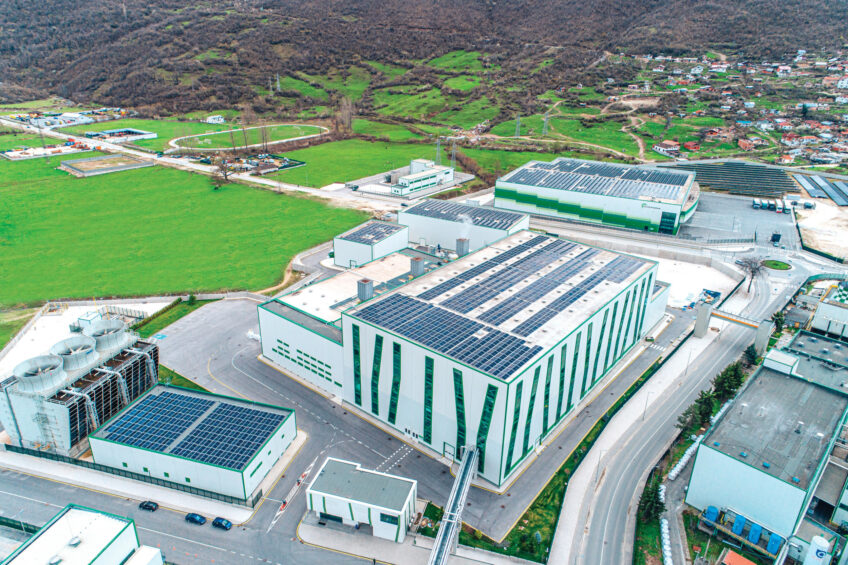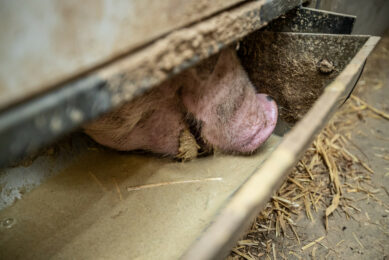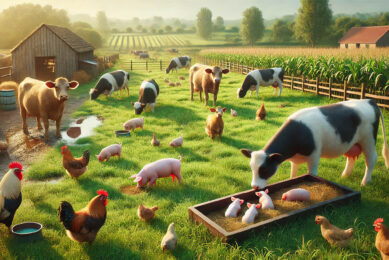Sustainable livestock production: Balancing the various aspects

Sustainability is a hot topic, and while everyone seems to be talking about it, it is being tackled in diverse ways. Sustainable livestock production requires a balance between economic profitability, social responsibility and respect for the environment, all factors that vary globally.
SUSTAINABILITY & WELFARE SPECIAL 2024 – read all articles
Sustainability is a hot topic, and while everyone seems to be talking about it, it is being tackled in diverse ways. Sustainable livestock production requires a balance between economic profitability, social responsibility and respect for the environment, all factors that vary globally.
Consumers are showing an increasing interest in how their food is produced. Originally, the focus was mainly on animal welfare and food safety, but the potential environmental impact of food production has garnered criticism in recent years. With predictions that the global population will be close to 10 billion by 2050, the FAO estimates that the amount of animal food products will have to increase by 20% during that time to meet demand. Rising demand coupled with increasing consumer scrutiny results in a double challenge for the livestock industry.
Animal welfare
Perceptions about animal welfare often vary according to a country’s socio-economic status. The World Organisation for Animal Health (WOAH) has published reports on welfare models including the Five Freedoms and the Five Domains. These models are widely recognised as a framework for assessing animal welfare in livestock production systems. In Europe, new broiler production systems with a focus on animal welfare have been introduced. In these concepts, bird densities and growth rates are considerably lower compared to conventional production. Studies comparing these concepts with conventional production techniques have demonstrated that focusing on animal welfare alone may lead to a worse environmental impact – carbon foot print, eutrophication,… – and a higher cost of production, resulting in higher consumer prices. Whilst animal welfare is an essential component in sustainable livestock production, it must be considered along with other important elements like the various environmental impacts.
Animal health
Maintaining good health is still the best way to reduce the need for medication and it also results in more sustainable livestock production. The One Health concept supported by WOAH (the World Organisation for Animal Health), recognises that the health of humans, animals, and the wider environment are linked and interdependent. Preventive measures like biosecurity, hygiene protocols, good management, nutrition and vaccination programmes can all contribute to keep animals in optimal health. Healthy animals also results in a more sustainable livestock production. For example, in broiler production, analyses based upon field data out of Aviapp – our digital health and performance monitoring system for broilers, layers and turkeys – demonstrates that good coccidiosis control can save up to 3 or more points in feed efficiency. Keeping this disease under control offers clear economic benefits and contributes to more sustainable production.
Environmental parameters
The livestock sector currently emits an estimated 12% of all greenhouse gas (GHG) emissions with carbon dioxide (CO2), methane (CH4) and nitrous oxide (N2O) as most prevalent. When considering other environmental parameters, the contribution of livestock is also significant, i.e., land use (33%), land-system change (83%), freshwater use (33%), and nitrogen (33%) and phosphorus (73%) flows. The environmental impact varies significantly between countries, species and production systems.
Ruminants
Via enteric methane (CH4) emissions, ruminants contribute ±16% of global methane emissions. Enteric emissions occur during fermentation in the rumen and can be considered a loss of feed energy. Improving forage digestibility in the rumen leads to better valorisation of the nutrients and less CH4 production. Our own trials in dairy cows have demonstrated a 10% improved energy efficiency and a 5% reduction in carbon intensity/kg milk when adding Hostazym X (xylanase) to the ration. Using additives that modify the rumen microflora leads to better efficiency and reduced environmental impact. One such example is monensin. Other feed additives will work directly on the methanogenesis, such as 3-NOP or Asparagopsis (algae), or indirectly by blocking H2 availability (e.g., nitrate). These products focus on methane output and generally do not provide a productivity improvement. General productivity improvements like increasing longevity, animal health and fertility, will reduce non-productive days and will also lead to a lower CH4 production per kg of output.
Monogastric
Feed formulation represents around 50 and ±70% of the emissions for pigs and poultry, respectively. In pig production, manure and fermentation (CH4 and N2O) accounts for another 30 to 40%. Large differences exist between farms because of manure storage. To reduce the environmental impact, feed efficiency is a logical first step. A joint study with the Schothorst Feed Research centre (SFR), analysing the effect of broiler performance on environmental impact parameters demonstrated that focusing on increased body weight output (and the resulting improvement in FCR) had the most positive influence on environmental parameters like climate change and eutrophication.
Enzymes are recognised for their ability to allow changes to the feed formulation, improving animal performance and reducing feed costs. Our own trail data demonstrated that adding OptiPhos Plus (phytase) to the diet improved technical performance and reduced the carbon intensity (kg CO2 eq / kg body weight) by 2.5 – 5%.
Table 1 presents the results of a broiler trial where the feed ration was reformulated using full matrix values for the Huvepharma enzymes to reduce the production cost and the environmental impact. Reformulating broiler feed using full matrix values of Optiphos Plus (phytase) and Huve Nexo (xylanase) in different steps. No enzyme (T1); Super dosing Optiphose 2000 FTU with no energy matrix values applied (T2); T2 + reduced crude protein (T6); T2 + Optiphos plus + Huve Nexo – 95 kCal ME (T8); Optiphos Plus + Huve Nexo with reduced crude protein – 95 kCal ME. The objective of the trial was to reformulate to reduce the environmental impact of broiler production but with maintaining similar technical results. Ingredients were priced at local market price at the time of the trial and serve as an indication. Environmental impact was limited to carbon foot print and eutrophication (terrestrial and freshwater). Consequently, we did not notice a significant difference in technical results between the different reformulations. The environmental impact is presented relative to the control (T1). Reformulation with maximum enzyme matrix values did result in a reduction of the environmental impact. Applying matrix values also generate a good opportunity to reduce feed costs.
Balancing the different aspects of sustainable livestock production
As a stakeholder we truly believe that sustainability is all about being economically profitable, together with respecting the environment and our social responsibilities. Focusing on efficiency and good health remains crucial. It is also important to recognise differences in sustainability aspects globally, and always balancing the different aspects of sustainable livestock production such as animal welfare, AMR and environmental factors together.






